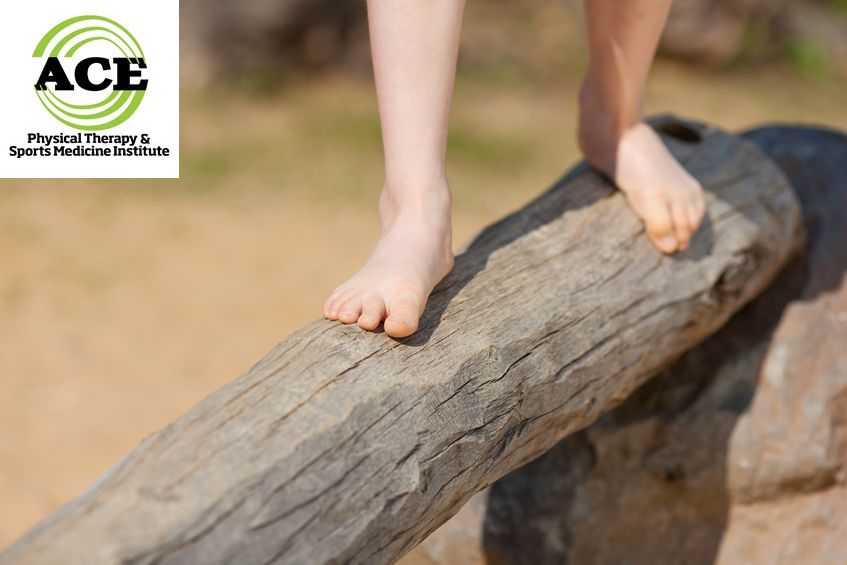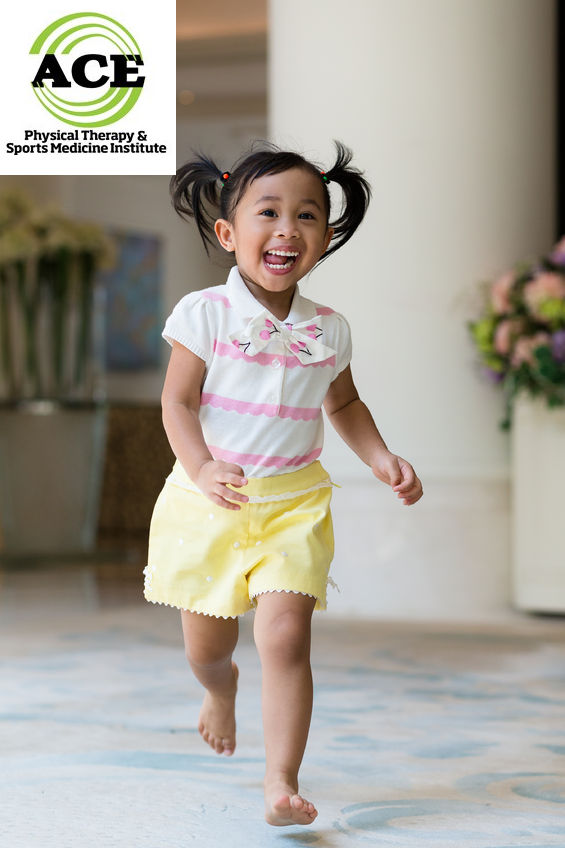SHOES VS BAREFOOT FOR YOUR CHILD?
 Shoes vs Barefoot For Your Child? by ACE Physical Therapy and Sports Medicine Institute
Shoes vs Barefoot For Your Child? by ACE Physical Therapy and Sports Medicine Institute
Tid Bits of Info.
- Wearing shoes leads to more hip muscle recruitment during gait.
- Barefoot walking helps a child develop the muscles of their feet that will support the arches of their feet.
- Wearing the improper shoes can lead to poor development of a child’s foot.
- Most toddlers run with a forefoot striking pattern and do not strike heel first.
- Shoes were originally designed simply to protect the sole of the foot.
Did you ever wonder why so many children want to run around with no shoes on their feet? For many children (and even adults), there’s something refreshing about kicking off the shoes and walking across the lawn barefoot. Research indicates that there are benefits to barefoot walking. For some activities, it may be a good idea to let you children walk barefoot. For other activities, it is important to help them find the proper shoe to support and protect their feet.
Some studies have focused on children walking in shoes vs barefoot, monitoring and recording the total oxygen consumption and energy expenditure. This research reveals that the energy used to walk around in shoes (shod walking) is far greater than walking barefoot. Other studies have been performed on children wearing different types of shoes. Athletic type shoes were better than hard soled shoes, but barefoot walking was still the best for energy expenditure and oxygen consumption.
For children, wearing shoes adds weight and bulk to their feet. When the studies were performed, the results revealed that the child wearing shoes took longer strides and their center of mass was displaced vertically a much greater distance than the child walking in barefoot. This combination might be in response to the added weight and bulk. This could explain why the child wearing shoes expended more energy and consumed more oxygen while walking around. Interestingly, the child wearing shoes also engaged the larger hip musculature more frequently and aggressively when they walked during the study. These muscles are larger and require more energy expenditure to produce the power that is needed to propel the child from point “A” to point “B”.
Wearing shoes during childhood years should coincide with the child’s activities. When safe and appropriate, allowing the child to walk around in barefoot is probably a really good practice to follow. Barefoot walking strengthens their foot muscles and enables them to move around for a longer period of time. An increase in activity level can have a positive effect on the child’s body weight and helps to develop life-long habits that can help them lead a very healthy life.
As a parent, picking the proper shoe for your child or helping them pick the proper shoe can be difficult. There are numerous shoes that are fashionable but are probably not the best fit for your child’s development and activity level. The goal should be to choose a shoe that fits properly and designed for dynamic activity. A soft soled shoe would be the best choice for most of their activities. This type of shoe would enable the child’s foot to adapt to the surface that they are walking or running on but still offer protection.
Choosing to wear shoes or not to wear them is a personal decision, but besides protecting the foot a shoe might make it harder to complete the task at hand due to an increase in energy expenditure and oxygen consumption when worn. It makes sense to allow a child to go barefoot as much as possible to help develop the foot musculature and enable them to be active for a longer period of time.
Read more articles on our main website blog at: ACE-pt.org/blog
Vist our main website at www.ACE-pt.org

